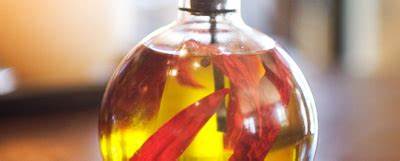Accessibility - Hydrosols







Accessibility - Hydrosols
In late 1999, nearly 50 percent of aromatheraphy stores, distributors, and practitioners surveyed sold and/or used some hydrosols. Every new aromatherapy book at least mentions hydrosols, and every year new waters come into the marketplace. Interest is exploding, and the uses for hydrosols are no longer primarily as an additive to cosmetic or beauty products.We are seeing the birth of a new paradigm in the world of aromatherapy.
The renewed interests in the waters is partly the result of an increase in the variety now available. There is also a greater interest in the broader therapeutic possibilities of this new aromatherapy. Aromatherapists are not just aestheticians or just body workers: they are holistic health practitioners. Educational standards in aromatherapy everywhere have been greatly improved, and professional, peer-reviewed organizations exist.
Conferences, seminars, and educational opportunities abound, and professional insurance is mandatory. We are considering ourselves professionals in the field of health maintenance and care and we would like the public to consider us professionals as well. The increase in professionalism also means that aromatherapists are seeking higher and higher standards in the quality of their products and use.
A health professional wants a professional product, and today that means essential oil produced soeciffically for therapeutic use. The public is also catchingon to this new standard, and the demand for quality products is starting to explode. As with any move forward, one finds that a level of information and education lies underneath. The quality issue was raised by the shift in the scope of practice and the surging popularity of aromatherapy.
The information demands, which both created and resulted from those shifts, mean that most new books and the majority of aromatherapy companies now highlight quality as their biggest selling point: quality of information, quality of sources, quality of products, quality of practice. Only the best is good enough. It is not a moment too soon. We can't treat health with polluted products.
Reference: Hydrosols- The Next Aromatherapy: Suzanne Catty
Articles - Most Read
- Home
- What are Hydrosols
- What are Hydrosols-2
- The Monographs
- How to Make a Hydrosol
- Table of Common Latin Names and pH Values - F - O
- Distilled or Extracted Specifically For Therapeutic Use - 3
- What isn't a Hydrosol?
- Kurt Schnaubelt
- Table of Common Latin Names and pH Values - P - S
- Wholly Water!
- Blue Babies
- Mature Skin
- Supply and Demands
- Recipes Alpha F
- Hydrosols In The Marketplace
- Hemorrhoids
- Nelly GrosJean
- Chemicals: Friends or Foes?
- Water as Medicine
- Genitically Modified Plants
- Water Quality
- Influences
- The Educated Consumer
Articles-latest
- Comptonia peregrinal/Sweet Fern- pH 3.8
- Citrus clementine (fe) Clementine Petitgrain- pH 4.3-4.4
- Citrus aurantium var. amara (flos) /Neroli Orange Blossom-pH3.8-4.5
- Cistus ladaniferus/Rock Rose-pH 2.9-3.1
- Cinnamomum zeylanicum (ec) Cinnamon Bark-pH3.3
- Chamaemelum nobile/Roman Chamomile - pH 3.0-3,3
- Centaurea cyanus/Cornflower/Bachelor's Button-pH 4.7-5.0
- Cedrus atlantical/Cedarwood/Atlas Cedar-pH 4.1- 4.2
- Hydrosols -The PH - Anomalies
- Hydrosols- Establishing Shelf Life and Stability
- Boswellia carterii/FRANKINCENSE
- Asarum canadense/ Wild Ginger/Canadian Ginger
- Artemesia vulgaris / Artemesia
- ARTEMESIA DRACUNCULUS - TARRAGON
- Angelica archangelica / Angelica Root - Hydrosols
- The Key, or More Correctly, the pH - 2 - Hydrosols
- The Key, or More Correctly, the pH-Hydrosols
- The Hard pHacts - Hydrosols
- Calamus Root/Sweet Flag - ACORUS CALAMUS
- Yarrow - Achillea millefolium - Hydrosols
- Balsam Fir - Abies balsamea - Hydrosols
- How the Monograps are Presented
- The Three-Week Internal Protocol - Hydrosols
- Protocols - Hydrosols

